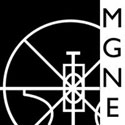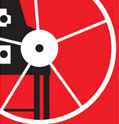What is a Monotype? What is a Monoprint?
 The terms monotype and monoprint represent two distinct processes used to create unique, one-of-a-kind prints.
The terms monotype and monoprint represent two distinct processes used to create unique, one-of-a-kind prints.
A unique print is a one-of-a-kind transfer of an inked or painted image from a metal or plastic plate to paper or another receiving surface. The ink or paint may be transferred from plate to paper with hand pressure or by means of an etching press. Sometimes there is enough ink or paint residue left on the plate surface to pull a second, much lighter print. This is called the “ghost”. Each transfer is unique and cannot be exactly duplicated.
“A monotype is made by drawing or painting on a smooth surface and transferring the image to a sheet of paper.
“A monoprint contains lines or images that can be repeated exactly, from one impression to the next, such as etched lines, a carved woodblock or a lithographic drawing. The artist varies the inking in each image, creating a unique impression that is called a monoprint.” (1)
There are three principle methods of making a monotype or the ‘painterly print’:
The additive or light-field method, whereby the artist ‘paints’ the image onto the plate by adding or building up pigment with brushes and rollers;
The subtractive or dark-field method, whereby the artist covers the entire plate with a thin layer of pigment and then creates his image by removing some of the pigment with brushes, rags, sticks, or other tools; and
The combination of the two techniques, whereby the artist works back-and-forth, adding and removing pigment from the plate as the image is developed.
Both monotypes and monoprints often pass through the press multiple times, and additional layers of ink and imagery are added to the print, thus building beautiful layers of form, color, texture, and line.
The tools and materials used to create a monotype or monoprint are virtually endless, from paint brushes to beach grasses, from q-tips to finger tips, from palette knives to old lace. Artists sometimes use etched plates inked differently each time. Sometimes stencils are created from such things as leaves, fabric, or even rubber gaskets, to add shape and texture. Monotype and monoprint techniques are sometimes combined in a single unique print.
The unique prints are sometimes enhanced by the artist with collage materials or direct drawing or painting on the printed surface. The technical possibilities are endless and, when combined with the individual visions of artists, the results are quite diverse and exciting.
Unique prints may be denoted by the words “monotype” or “monoprint” or by the symbol “1/1”.
Unique prints stand in contrast to editioned prints, in which each print in the edition is identical and appreciated not only for the artistry of the image, but also for the technical ability of the master printmaker to create an edition of identical prints.
Interestingly, “It was not until the 1970s that the monotype emerged as an alternative to the technical, structured enterprise that printmaking had become. Recognizing no rules or boundaries, artists pushed the previous limits of the medium to create a richer, more complex, more versatile means of expression.” (2)
(1) From Singular Impressions: The Monotype Process: Video, Smithsonian American Art Museum 1997
(2) From Singular Impressions: The Monotype in America: Smithsonian American Art Museum 1997
** Reprinted Courtesy of Monotype Guild of New England


